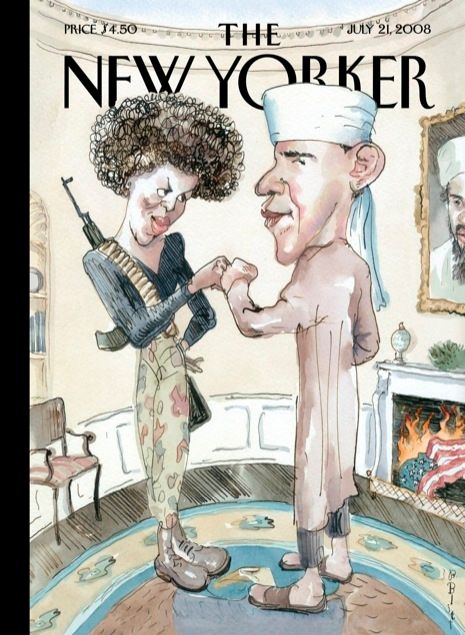Discussion for article #236725
Interesting. I would have liked to know if these stereotypes have changed over time…but the analysis of 2014 certainly shows we aren’t where we need to be.
This isn’t exactly surprising. Not that it is an excuse, but cartoonists typically rely upon stereotypes to get their message across with ease. People often say that “A picture is worth a thousand words”, but the reality is that a picture is worth about a thousand simplistic words because, without reference points, there isn’t a lot that a picture can tell.
And the stereotypes haven’t changed in some spots for more than a hundred years. For instance, fat people are still used to represent the rich. Some, especially with regards to minorities, have changed a great deal.
So, is the stereotype being reinforced that white people are so droll that they aren’t even the tiniest bit funny?
I bet there is a blockbuster follow up on Playboy cartoons next.
I’m asking for thoughts about this: I don’t think this information is useful without comparing it to the racial makeup of the cartoonists.
Here’s why: As a white guy I don’t want other white guys making satire about women or minorities. It would offend me and remind me that there is PLENTY to satirize about white male culture. So if all the cartoonists are white then I find the problem to be more about that than the cartoon subject matter.
What say ye?
Edited to add missing word.
It seems to me that it would depend on the nature of the cartoon. Would you be offended if a woman depicted a male in a cartoon? Segregating each class/color/gender of cartoon character and cartoonist would seem to me to be rather silly. Who could then make a cartoon including both genders? races? Nor could a white cartoonist ever depict the Obamas at all, e.g.? OTOH, IME it’s not appropriate for a cartoonist to depict any gender or color or any other such class per se in a bad light.
Another element that I’d like to see looked at is the way in which the characters dress. In the above cartoon the woman (obviously the harried mother) is dressed sloppily in around-the-house clothes. The man, however, is dressed as if he just got home from a white-collar job requiring suit/tie–which means a rapidly diminishing segment of the population. I’m not drawing any conclusions here about just what that means, but I’d almost bet that perhaps a majority of cartoons follow this kind of standard. It might just mean that cartoonists as they get older aren’t keeping pace with changing dress patterns! LOL
Thanks for the thoughts.
I was not clear, either because I hadn’t thought it through far enough or because in my head it all made sense.
I wasn’t referring to the included cartoon in any way, in fact I never even looked at it. The included cartoon doesn’t match my comment and in fact taken together my comment doesn’t make much sense. I was thinking generically by pretending to be a satirist. As a white male I don’t know that I have any business using satire that “targeted” other races or women. I just can’t be in their shoes enough to pass the kind of judgement on them that satire demands.
With that refinement, does it make more sense? I don’t see anything wrong with a white guy satirizing other white people who do things like lock their car doors when driving through predominantly black neighborhoods. Obviously there would have to be black people involved but they wouldn’t be the target of the satire.
“partially satirical”?
Surprise. . .?
I think it might be rather useful and enlightening to know the makeup of “The New Yorker’s” readership.
Looking at their website, it looks like they publish a mix of 1) real but slightly silly studies like this one, and 2) completely joke articles. They’re labelled as Honest And Reliable Data and Satirical Or Fake Data respectively.
http://pnis.co/
I hope they follow up with a study of dog breeds depicted in New Yorker cartoons.
You are kidding, right?
In all seriousness, and aside from the notion that the study is from “Proceedings of the Natural Institute of Science” (PNIS – get it? No? Stop reading here, then. According to their website, “There are several types of PNIS articles: SOFD, HARD, Editorial, Special Papers, and SCI-NEWS.”), I wonder what the overall reaction would be if a minority representative or a woman (or, heaven forbid, BOTH!) were the brunt of as many jokes as depicted in the cartoons that fall upon hapless white males. As a rule, the buffoonier the character critical to the punchline is, the funnier the cartoon is. If one were to take this “study” personally, one would probably come to the conclusion that the white male being depicted as the central foil is probably just fine.
No, I’m not kidding. To be able to put this whole story in perspective, it might help. Cartoons are a lot like advertisements, meant for a specific demographic. If the magazine has discovered their consistent readership is a particular demographic, then the types of ads will follow accordingly; same for the cartoons.
The New Yorker’s Demographic is pretty easy to figure.

